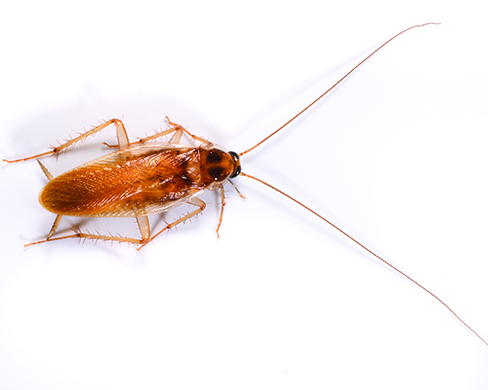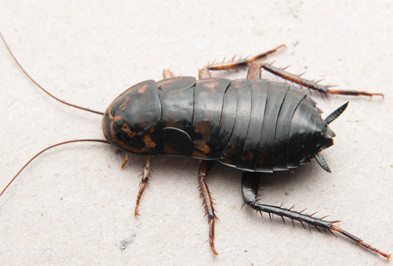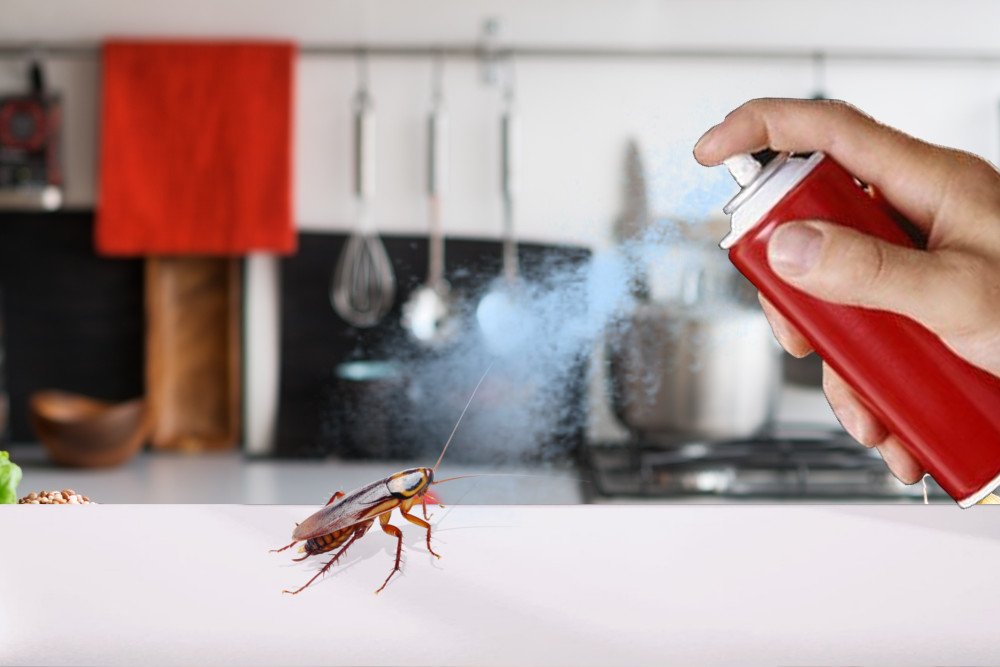Many of these crawling or flying creatures live so far away from human civilization that most of us aren’t even aware of their existence. And then there are cockroaches: pesky, resilient pests living among that you can never really get rid of. Humans have produced countless sprays, liquid solutions, and whatnots to get rid of cockroaches, and yet they somehow survive. Have you ever wondered why it happens? And how do cockroaches feel about it? Do cockroaches feel pain? No, the cockroaches don’t feel any pain simply because of the structure of their body. Their neurons and nerve fibers are not designed to make them feel pain. The seemingly painful way in which they twitch if stepped on or swatted is merely an outcome of their nocifensive behavior. Are you wondering why cockroaches are intriguing to humans? Perhaps because we detest them or because they are seemingly disgusting. But can they even see us? Do they feel pain? Can they actually survive without a head, or is that just an old wife’s tale? If you are looking for these answers, you have arrived at the right place. You are about to find all the answers in this article. Stay tuned till the end to all know about these little insects and their ability to feel pain.
What is a cockroach?
Cockroaches are the earliest winged insects on the planet, with their ancestors dating back to 320 million years ago. These insects belong to the order of Blattodea. Cockroaches are better known as roaches. There are about 4600 species of cockroaches in the world and 30 of them are associated with humans. Only a few species of roaches are termed pests. The term “Cockroach” finds its origin in the Spanish term used for cockroach, “Cucaracha.” During the 1620s, the name was modified by the English folk etymology into “cock” and “roach.” Did the roaches roam the earth with the dinosaurs? The cockroaches were on the earth even before the arrival of dinosaurs. It might be a hard fact to digest, but the truth, nonetheless. Roaches predated dinosaurs too. We know what you are thinking because we are thinking it too; there’s no getting rid of them.
Different types of cockroaches
Have you ever wondered just how many species of cockroaches roam the Earth? Well, the answer is a lot. Possibly more than we could ever wrap our minds around. However, here, we’re only going to stick to the important ones:
- American Cockroach (Periplaneta americana)
American Cockroaches are found in the regions of Africa and the Middle East. They are a long cockroach species with reddish-brown colored overalls and are generally cooped up outdoors. When indoors, these cockroaches usually keep to the dark and heated areas. 2. German Cockroach (Blattella Germanica)
German Cockroaches are typically found only in the United States and Canada, but due to their negligible size, they are now spread throughout the world through transport. German Cockroaches are light brown in color with two dark stripes on their body. 3. Brown-Banded Cockroach (Supella Longipalpa)
Brown-Banded Cockroaches are similar to German Cockroaches but smaller in size. As their name suggests, they have two light-brown colored bands on their body. 4. Oriental Cockroach (Blatta Orientalis)
One of the filthiest household pets, the Oriental Cockroaches are oval-shaped and shiny-black or dark-brown in color. They find their origin in Asia but are transported via commerce transports to all temperate regions. 5. Brown-Hooded Cockroach (Cryptocercus)
Also known as Wood Roaches, the Brown-hooded Cockroaches are endemic to eastern and central North America. They feed on wood and are often found under logs and stones.
Do cockroaches feel pain?
Cockroaches do not feel pain. If they are sprayed, stepped on, swatted, or hit, these insects display nocifensive behavior. They only squirm and twist around when touched. Squirming and twisting are mere physiological patterns and not evidence of their pain. From a scientific and biological point of view, cockroaches cannot feel any sort of pain due to their simpler nerves. The neural networks of these ancient insects are not complicated like humans. They function without a spinal cord, and the zig-zag structure spread across their body is not complex as well.
Do they have pain receptors?
While cockroaches do possess pain receptors, they are very different from humans. In order to learn about the pain receptors of roaches in detail, first, we need to understand the minute details of the functioning of receptors. Nociception is nothing more than a process that makes certain that an organism sustains as little damage as possible. Like every living organism in the world, the roaches too, are at the risk of harming themselves. Roaches are structured to have thick nerve fibers and neurons to provide them with all the essential information. Fortunately for these insects, this doesn’t include feeling pain. The one and only task of a roach’s pain receptor is to activate its escape instincts. It indicates the cockroaches to flee the dangerous territory. They don’t require to feel the biting, stinging, burning, or other pain to force them to react. The scientists have termed this unique tendency of the roaches (as well as of a majority of insects) as “nocifensive behavior.”
Do roaches feel pain differently than us?
The pain receptors of humans and the roaches are poles apart in their functioning. Nociceptors of the roaches send a signal to their brain, which causes them to deviate from the source of stimulation. It is merely a physiological response, free from the distress or discomfort of enduring pain. Human beings are empathetic creatures; if we stomp on an insect by mistake, it’s natural for us to feel sorry about it. Be as it may, but there is a slight difference between pain and nociception. Nociception works wonders for the roaches (as well as for a majority of other insects as well). Generally, it occurs when the sensory neurons detect a stimulus that can damage the tissues of an organism. This process is followed by pain in humans. It is believed that for humans, pain is an adverse effect of nociception. Pain is similar to hypertension, sweating, fainting, etc. According to Dr. Shelley Adamo, roaches have fewer output neurons compared to humans. It is the reason why roaches can’t have the same neurological characteristics to experience pain. Nociception provides a physical response that is often involuntary and unconscious. This involuntary response is the only thing keeping humans safe from physical dangers such as touching a hot iron or walking in fire.
Can cockroaches live without a head?
As creepy it may sound, it is true. Roaches can survive without ahead for a week. The reason behind it is that these insects breathe through small openings in their body segments, and they have an open circulatory system. Since they do not breathe through their head, roaches can survive a few days. However, without a way to drink, they eventually die of dehydration.
Do they feel pain without a head?
The head is an essential part of a living organism. If it is severed, it’s the general assumption that the organism is no longer alive. It cannot feel any pain after that. Nonetheless, roaches have challenged this theory by staying alive without their head. So, is there anything else too which they can achieve? Something which is nearly impossible? Can they feel pain even with losing their head, literally? A quick answer to this would be a yes. Let’s move to figure out how. Scientists have conducted tests on headless roaches to get the answer to this question. They exposed the roaches to noxious stimulation and found out that nocifensive response was nominal in headless roaches compared to the intact roaches. This discovery indicated that the roaches have their nociceptive pathways linked to the brain. Yes, the body of the roach will respond to external stimulation by avoiding objects and moving around. But the extent of the response of the stimulus would be less when they are headless.
The explanation behind roaches writhing in pain
When you stomp on a roach (purposely or unintentionally), you will find that little insect twitching. The sight of a writhing cockroach will make you wonder if it’s in pain. However, we have already discussed at length that responding to a stimulus is different than experiencing pain. For instance, humans can react physically to any external stimulation and still be comatose. It cements the fact that pain and nociception are not co-dependent; one can survive without the other. On the other hand, roaches might squirm after being injured, but they are not in pain. Their body is just responding to the external stimulus.
Insecticides: do they cause pain to the roaches?
After inhaling the insecticides, the roaches are found scurrying around. They even flip themselves upside down in the seemingly distressed state. Insecticides have neurotoxins in them. Neurotoxins are a type of poison that disrupts the nervous tissues of an organism. The neurotoxin makes the roaches incapable of moving their muscles. In haste and panic, roaches flip themselves upside down and then desperately try to flip backward. The center of gravity of roaches is higher than humans. They carry a majority of their weight on their back, and once flipped, they are unable to turn their bodies. When roaches behave like this, a majority of the human population believes that they are watching a cockroach die in a slow and exasperating manner. Be that as it may, but the roaches behave like this because slowly, they start losing control of their body and nothing more. Insecticides bring no pain to the roaches. Rather, most of them don’t even die due to neurotoxin. If they regain their natural position somehow, they can even control their muscles after a while and run. What actually kills them is their inability to eat or drink due to immobility.
Is it cruel to hurt roaches?
The origin and existence of pain have been a debatable topic for centuries. The understanding of biology as a subject and neurons is relatively new. Nevertheless, all the recent research points towards the fact that roaches do not feel any pain. However, it won’t cause us any harm if we keep in mind that all the experiments and research ever conducted on cockroaches or their pain receptors are carried out from the perspective of humans.
Conclusion
In this article, we talked about our ancient friend, cockroaches. We discussed the types of roaches, whether they can see us, feel pain, or be headless yet alive, among other things. So, the next time you see a roach writhing in pain or moving headless, remember that while it might be painful to watch, they are not really in pain.






